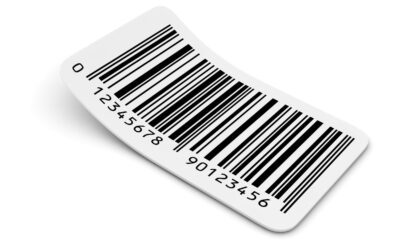What Is A Passive RFID Asset Tracking System?
RFID asset tracking will automate your operations, improve the transparency you have over your tools and equipment, and lead to you saving time and money.
With passive RFID tracking, you’ll be able to monitor how assets move within a building without needing to physically interact with them. In other words, you’ll be able to automate location tracking and auditing operations.
Find out more about passive RFID asset tags and RFID tracking, here.
How Does Passive RFID Asset Tracking Work?
Passive RFID tracking works through the use of passive RFID tags. These asset tags link your physical assets to digital counterparts. You will have hardware that can read these tags and couple up the tag and the asset.
In other words, if you’re using passive RFID asset tracking for construction equipment tracking, you’ll stick passive RFID labels onto your tools and equipment. Each of these tools will have a unique profile on your asset tracking software, then you can use the label on the tool to link the profile to its physical counterpart.
There are two main bits of hardware that you can use when it comes to RFID tracking. Both have different levels of automation.
Handheld RFID Asset Tracking
Handheld RFID asset tracking uses handheld readers which link to your asset tracking app via BlueTooth. This way, you’ll be able to speed up audits and location tracking with ease.
This type of asset tracking works in a similar way to QR code asset management; you will only be able to scan from a distance without a line of sight.
This means that you can use standard asset management operations from a distance to track high-value collections where a tag cannot be visible.
Handheld readers are particularly useful in environments where mobility is key. For instance, warehouse managers conducting spot checks or maintenance teams verifying equipment inventory in multiple locations benefit from the flexibility handheld readers offer. With their portability, these devices provide an efficient solution for day-to-day asset tracking operations.
Fixed RFID Asset Management
Passive fixed RFID asset management uses passive fixed RFID readers. These readers are placed in tactical locations in your building and read your passive RFID asset tags when they’re in range.
As fixed RFID readers utilise antennas, they will also be able to track which directions your assets are moving in. In practice, therefore, if you’re using asset management to speed up audits for healthcare operations, your fixed readers will pick up when an asset moves from ward A to B, for example.
This provides a much higher level of automation, allowing you to track your assets’ movements with minimal physical interaction.
Fixed RFID readers are ideal for high-traffic areas such as manufacturing lines, entrances, and exits. These systems create an invisible tracking net, providing instant updates on the location and movement of assets. The automation reduces human error, ensuring more accurate and reliable data.
What Are Passive RFID Asset Tags?
Passive RFID asset tags don’t have a battery, unlike active tags. Passive RFID tags only have two main components, an antenna and a microchip.
These tags are called “passive” as they work from the radio frequencies emitted by your handheld or fixed readers. In other words, these tags will pick up the frequency sent out by your fixed RFID reader and bounce it back to indicate that this unique tag is in range.
There are a few different types of passive RFID asset labels and they differ in functionality. For example, Ultra High Frequency (UHF) tags will have a higher read-range than High Frequency (HF) or Low Frequency (LF) tags, as their read range’s radius will be larger.
There are also different materials to ensure that some passive tags don’t interact with metallic surfaces and become nullified, for example.
Customisation is another critical aspect of passive RFID tags. You can select tags designed for specific conditions. For example, tamper-proof tags are ideal for high-security environments, while waterproof tags are perfect for outdoor use or in industries like agriculture and fisheries.
The Advantages of Passive RFID Tracking Over Other Systems
Passive RFID asset tracking systems provide a number of clear benefits compared to conventional asset management techniques and even active RFID systems. To begin with, passive RFID tags are economical, which makes them suitable for extensive implementations. As they are not dependent on batteries, their durability leads to lower maintenance expenses and a decreased environmental footprint.
Additionally, passive RFID tags facilitate smooth incorporation into current workflows. Managing IT assets in a corporate environment or tracking inventory in a warehouse becomes more efficient with passive RFID systems, which offer scalability and adaptability that streamline operations without the need for major infrastructure changes.
Furthermore, passive RFID systems perform exceptionally well in settings where durability and reliability are crucial. Various tags are designed to endure tough conditions, such as exposure to extreme temperatures or chemicals. Their durability makes them ideal for sectors like manufacturing, healthcare, and construction.
For businesses aiming to improve operational visibility, passive RFID seamlessly integrates with analytics tools, offering data that can help pinpoint inefficiencies, forecast asset lifespan, and optimise procurement processes.
Wide Variety of Passive RFID Applications
Reflect on the healthcare sector. Passive RFID tracking is transforming the way hospitals manage their equipment. By monitoring surgical instruments and ensuring the availability of life-saving devices, passive RFID plays a crucial role in maintaining operational efficiency. Envision the tranquillity that arises from the assurance that essential assets are exactly where they should be.
In retail, passive RFID has become essential for inventory management. Retailers can efficiently scan entire shelves of products, minimising manual labour and enhancing stock accuracy. Customers experience improved product availability, while businesses reap the rewards of increased profit margins due to minimised shrinkage and overstocking.
Passive RFID streamlines the management of tools and machinery for construction companies. Say goodbye to misplaced equipment and wasted time searching—you will always have a clear understanding of where your assets are, keeping projects on track and within budget.
Moreover, logistics companies are utilising passive RFID to monitor shipments and enhance supply chain transparency. Embedding tags in packages allows businesses to effectively monitor goods as they progress through warehouses, shipping routes, and distribution centres.
Key Considerations When Implementing Passive RFID Systems
While passive RFID tracking offers numerous advantages, there are a few factors to consider when implementing a system. For starters, understanding the environment where your RFID tags will operate is crucial. Metallic surfaces and interference can impact the performance of certain tags, so selecting the right materials and frequencies is essential.
Another important consideration is the range of your readers. Depending on whether you’re using handheld or fixed readers, the read range can vary significantly. Ensure that your chosen hardware matches your operational needs to avoid gaps in tracking.
Finally, integrating RFID tracking with existing systems and software is key to maximising its potential. Platforms like itemit simplify this process, providing seamless compatibility and robust features that enhance your asset management capabilities.
Training employees on how to use RFID systems effectively is another important aspect. While the technology reduces manual effort, ensuring all staff understand how to operate the system will enhance overall efficiency.
Future Trends in Passive RFID Tracking
The possibility for passive RFID systems changes along with technology. Even more efficiency and accuracy are promised by new ideas like better reader capabilities and updated tag designs. For ultra-high-frequency tags, for instance, improvements are widening scan ranges and allowing more exact asset tracking.
Another trend to observe is the integration of passive RFID with IoT ( Internet of Things) systems. By tying RFID data with IoT sensors, businesses may better understand asset use and environmental conditions and forecast maintenance needs. This convergence of technology will revolutionise sectors, including agriculture and logistics.
Finally, as sustainability takes centre stage for companies worldwide, passive RFID’s environmentally benign character—because of its low energy consumption and lack of batteries—makes it a major instrument for better asset management systems.
Emerging Use Cases of Passive RFID
Unanticipated industries, like event planning and libraries, are starting to see passive RFID enter their scene. Large-scale events, for example, use passive RFID tags to monitor participant mobility, therefore guaranteeing safety and effective crowd control. Likewise, libraries maintain book inventory and automate the check-in and check-out process using RFID tags, therefore offering a flawless user experience.
Passive RFID tags are becoming to be quite helpful in agricultural animal control. Improved farm efficiency and animal care follow from farmers’ monitoring of animal movement, health, and location without direct engagement.
Using itemit As Your Passive RFID Asset Tracking System
itemit is a world-first RFID asset tracking system as you can use itemit’s RFID capabilities off-the-shelf. You can purchase fixed RFID readers and passive RFID tags from us directly, meaning your set-up costs are non-existent.
itemit passive fixed RFID tracking system is fast to set up, low-cost, and integrates with our software instantly, meaning you don’t need any custom development.
To find out more, you’ll be able to email us at team@itemit.com or fill in the form below to start your 14-day free trial.
What Is a Passive RFID Tracking System?
Choose a better way to track your assets
Start your free 14-day trial now
Instant access. No credit card details required.
Related articles
Everything You Need to Know About 2D Barcodes
Discover everything about 2D barcodes, including how they work, their benefits, and how they are revolutionizing industries and improving business operations
Complete Guide to Asset Lifecycle Management and Its Benefits
Learn about asset lifecycle management and how it helps businesses optimize asset usage, reduce costs, and improve efficiency throughout the asset’s life.
Benefits of Vendor Managed Inventory for Your Business
Learn how Vendor Managed Inventory (VMI) can streamline your supply chain. Explore the key benefits and how it helps optimize inventory management.






